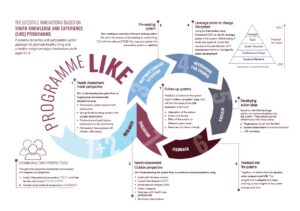The figure below is a representation of the LIKE logic model (logic model). This model is deliberately shaped like the infinity symbol to show that a participatory systems approach is continuous and adaptive. The LIKE logic model consists of 7 steps. For each step, we have developed materials and tools to help understand, change and evaluate the system.
Click to enlarge.


